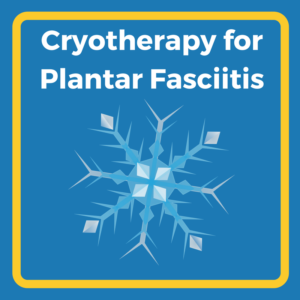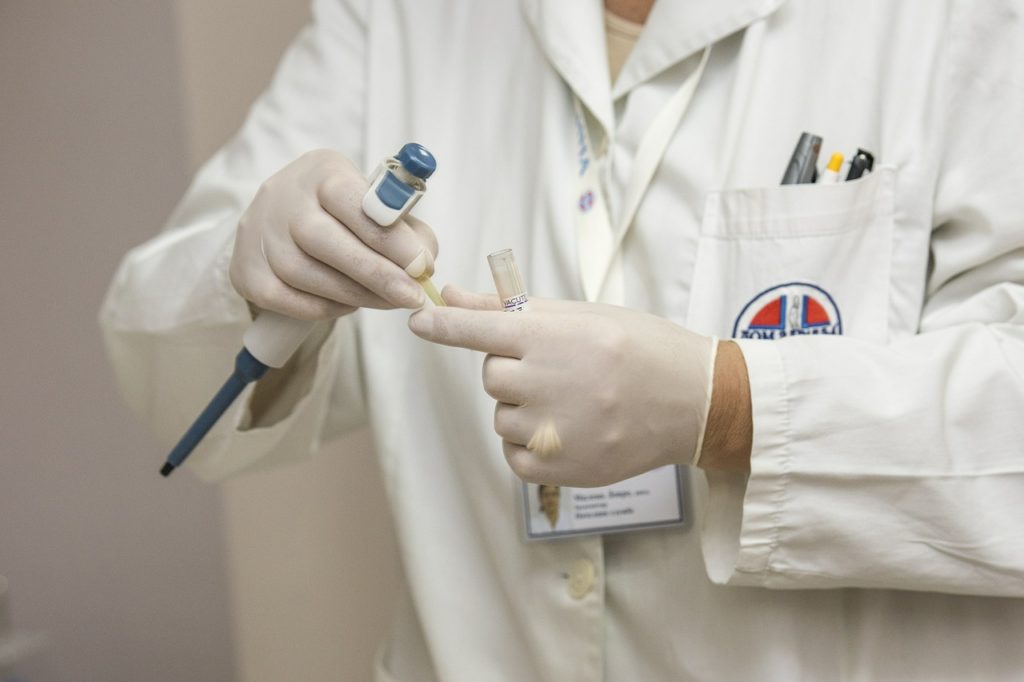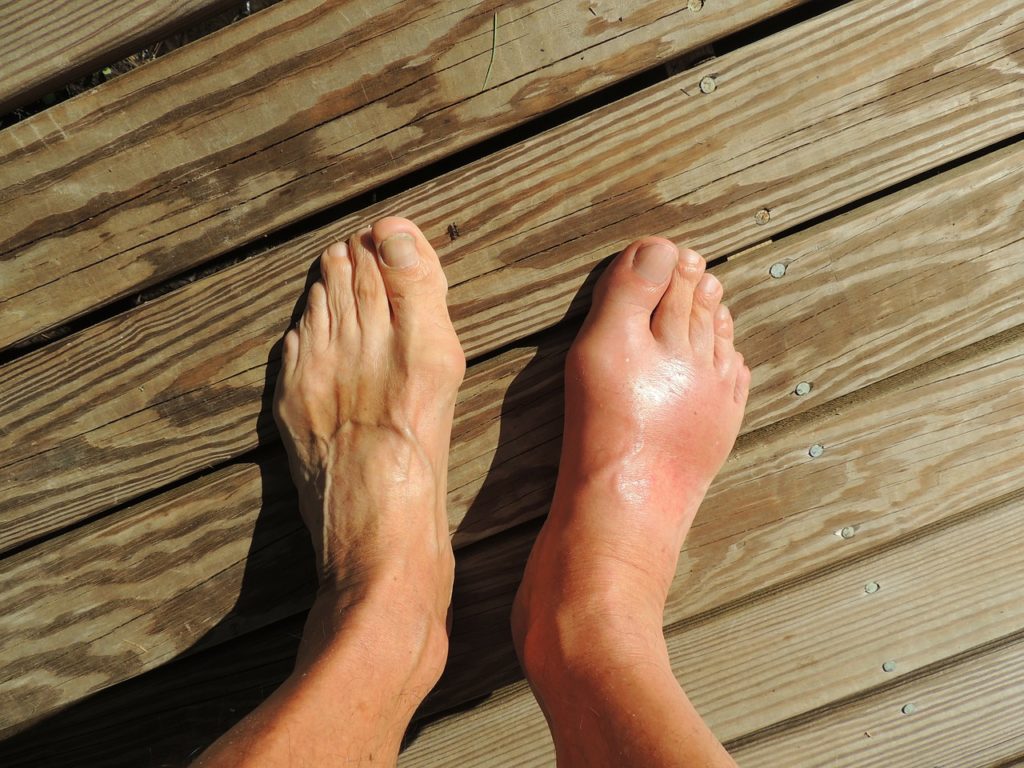 Foot cryotherapy, a relatively new procedure to treat the pain from chronic plantar fasciitis, is growing in popularity.
Foot cryotherapy, a relatively new procedure to treat the pain from chronic plantar fasciitis, is growing in popularity.
Initial reports show that the procedure has a great deal of potential, providing significant pain relief with a minimally invasive procedure. In one long-term study about cryosurgery for heel pain, 77% of patients reported significant pain relief in both short- and long-term check-ins (3 weeks post-procedure and 24 months post-procedure).
What should you know about foot cryotherapy? Is it safe? What is the difference between whole body cryotherapy and localized cryotherapy? Is it painful? How much does it cost? We have your answers!
What Is Foot Cryotherapy or Cryosurgery?
Cryotherapy, also known as cryosurgery or cryoultrasound, actually destroys nerve fibers (not the nerve itself). While the nerve remains intact, the inflamed nerve fibers (imagine an anemone) are destroyed. In about three weeks’ time, new fibers regenerate with healthy cells.
Cryotherapy is pretty similar to radiotherapy ablation–in which an ultrasound-guided probe uses heat to target and destroy damaged tissue. In cryotherapy, an ultrasound-guide cryoprobe uses ice and cold (more specifically nitrous oxide) to destroy damaged nerve fibers to interrupt pain signals.
Previously, cryotherapy was something of a shotgun approach. However, with advances in technology physicians are able to effectively target specific nerves with a cryoprobe.
Localized Cryotherapy Vs. Whole-Body Cryotherapy
The type of cryotherapy used to treat plantar fasciitis is also known as localized cryotherapy, since only a small part of the body (the plantar fascia) is treated, using a guided probe. However, as localized cryotherapy has grown in popularity, some health providers now offer whole-body cryotherapy.
In whole-body cryotherapy treatment sessions, a person enters a very cold, subzero vestibule (as cold as -80 degrees celsius!) for a short amount of time. While there hasn’t been much research to back the benefits of whole-body cryotherapy, supposed benefits include a rush of endorphins and reduced inflammation. But a study from 2014 cautions that icing and cold water baths appear to be equally effective (and far less expensive).
Cold Therapy Vs. Localized Foot Cryotherapy
So, is localized cryotherapy any more effective than, say, icing your feet or submerging your foot in very cold water to help reduce pain and inflammation? Yes and no.
While ice packs and cold water will certainly reduce inflammation and pain (and are fantastic for everyday use!) these home therapies won’t actually destroy inflamed nerve fibers that can be a cause of persistent pain like a cryotherapy probe.
Is Cryotherapy a Safe Procedure for Heel Pain?

Cryotherapy is generally considered very safe with minimal side effects, although you should remember that this is a newer procedure for plantar fasciitis that is still considered investigational/experimental. Cryoultrasound has been the subject of more in-depth research when it comes to neuromas and the destruction of abnormal tissue like tumors.
The good news is that while studies on cryotherapy and plantar fasciitis are still sparse, initial studies and anecdotal evidence are promising. And given the low risk of side effects and the lower cost (compared to surgery), cryosurgery shows a lot of potential.
What You Should Know About Foot Cryotherapy
The first thing you should know is that foot cryosurgery isn’t a painful procedure. You’ll feel a pinch from the needle when the local anesthetic is injected, of course, but after that, you won’t feel much more than light pressure during the procedure as a tiny incision is made and a cryoprobe is inserted into the foot.
The entire procedure will only take a few minutes, during which your doctor will guide the cryoprobe with the help of an ultrasound. A tiny, very cold ice ball on the end of the cryoprobe will destroy damaged nerve fibers, blocking pain signals and allowing for the regeneration of healthy nerve fibers.
Recovering from Cryosurgery
After the procedure, you’ll be encouraged to rest and elevate your feet, ice the injection site, and take anti-inflammatory pain relievers as needed. You should notice your pain level decrease as your foot heals, and you can typically go back to work and resume your daily activities after just one or two days. If at the end of two or three weeks, your pain level hasn’t subsided significantly, the procedure can be repeated.
The site is covered with compression bandage and patients are advised to reduce activity, ice and elevate for the remainder of the day. The bandage can be removed the following day and the patient can cover the area with a regular Band-Aid. You should keep the injection site clean and dry for at least 24 hours. Normal activity can be resumed within one or two days of the procedure and any pain that occurs is managed with NSAIDs or Tylenol. Pain continues to reduce over a two-week period; if at the end of the four-week period the reduction is not sufficient, the procedure can be repeated.
Side Effects and Benefits of Cryotherapy

Side effects of cryotherapy are generally mild. Some inflammation may flare up during healing and shouldn’t last more than a few days. Other potential side effects include bruising at the site of the injection and cryoprobe insertion or mild frostbite at the site of the probe insertion.
For some people who undergo cryosurgery, a tiny lump appears at the injection site that persists for several months after the area has healed. Typically, this lump will disappear within six months and isn’t painful.
For most people who undergo cryosurgery, the benefits outweigh these potential mild side effects. Many people experience significant or complete pain relief in the weeks and months following the surgery, particularly when cryosurgery is combined with treatments that address the root cause of plantar fasciitis.
How Much Does Cryotherapy Cost?
Cryosurgery is covered by many insurance plans, and out-of-pocket costs vary but fall somewhere in the neighborhood of $500 for most patients. Before deciding to undergo cryotherapy, make sure to talk to your doctor and insurance provider to find out your end cost.
Is Cryotherapy a Cure for Plantar Fasciitis?
While cryotherapy shows a lot of promise in reducing or eliminating pain from plantar fasciitis, new nerves that regenerate are still susceptible to damage unless the root cause of plantar fasciitis is addressed.
It’s important to determine the cause of your plantar fasciitis and take steps to prevent its return. Wearing plantar-fasciitis specific orthotic inserts that support and cushion your plantar fascia ligament, reducing the strain on your fascia, and stretching the muscles and ligaments in the arches, feet, and legs to keep them limber and strong will go a long way toward treating the root cause of your plantar fasciitis.




I have plantar fasciitis for several years now
Several years????
They meant radiofrequency ablation which uses microwaves to increase temperature.
Megavoltage radiotherapy is also an effective treatment option, and can be done by a radiation oncologist. It’s about as effective as any of these methods but completely non invasive.